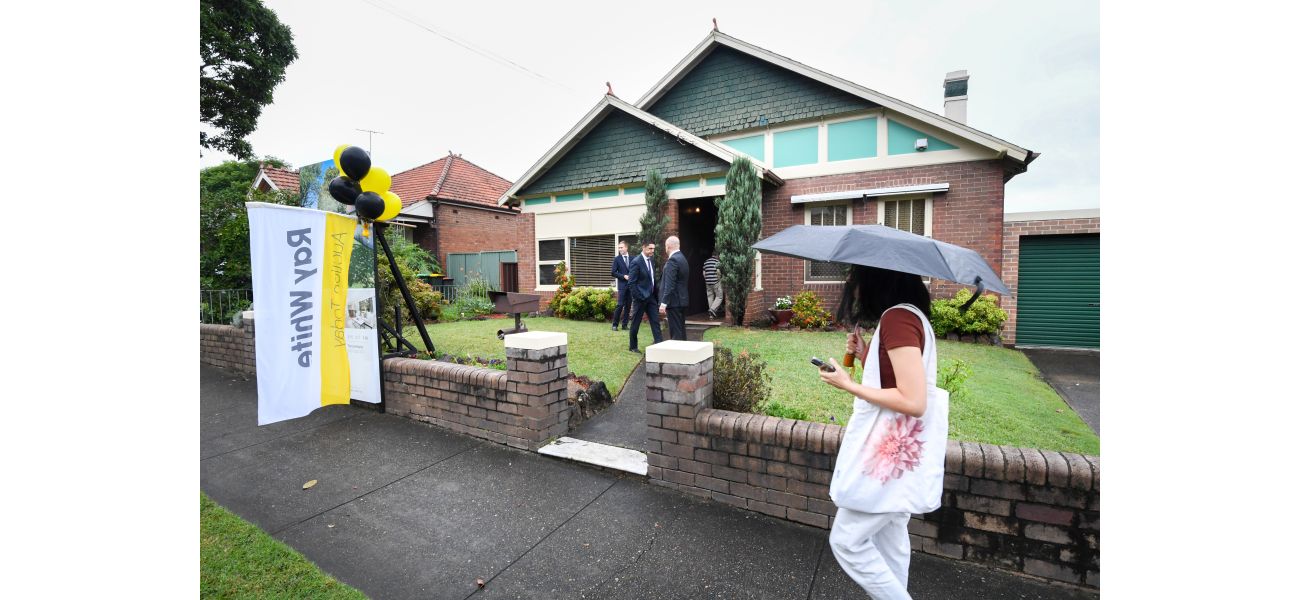Bad news for first-time home buyers before the holiday season.
Australia's banking regulator refuses to decrease mortgage serviceability buffer despite pressure.
November 25th 2024.

The debate over Australia's mortgage serviceability buffer has been ongoing, with the country's banking regulator standing firm against calls to lower it. Despite pressure from various parties, including the Australian Banking Association, NAB, ANZ, and government and opposition MPs, the Australian Prudential Regulation Authority (APRA) has announced that it will remain at 3 per cent.
The main argument for easing the buffer is that it hinders first-home buyers from entering the property market. However, APRA has not been convinced by this reasoning, citing the continued financial risks in the current economy. In a statement, APRA chair John Lonsdale highlighted the potential shocks to household incomes from a slowing labor market, as well as the uncertainty in the global economic environment.
Lonsdale also pointed out that while house price growth has slowed, prices are still significantly higher than before the pandemic, and household debt remains high relative to incomes. This is a key vulnerability, especially if adverse economic scenarios were to occur. APRA has already seen an increase in non-performing loans and anticipates this trend to continue, particularly if unemployment rates rise.
The serviceability buffer requires potential borrowers to not only prove their ability to afford mortgage repayments at current interest rates but also to show that they could still afford them if rates were to rise 3 per cent. While this is meant to ensure responsible lending practices, critics argue that it prevents first-home buyers from purchasing their own property.
Liberal Senator Andrew Bragg has been a vocal critic of the buffer, stating that it may have been reasonable to have a 3 per cent buffer when the official cash rate was 1 per cent, but not when it is set at 4.35 per cent. He also believes that the buffer can create "mortgage prisons," where refinancing becomes impossible.
It is worth noting that the serviceability buffer has not always been set at 3 per cent. It was initially set at 2 per cent in late 2014 and was increased by half a percentage point five years later. In 2021, it was raised again by 0.5 per cent in response to record-low interest rates of 0.1 per cent.
In conclusion, while there have been calls to lower the serviceability buffer for new mortgages, the Australian banking regulator has decided to maintain it at 3 per cent due to ongoing financial risks in the current economy. While this may impact first-home buyers, APRA believes it is necessary to safeguard against potential economic shocks and rising household debt.
The main argument for easing the buffer is that it hinders first-home buyers from entering the property market. However, APRA has not been convinced by this reasoning, citing the continued financial risks in the current economy. In a statement, APRA chair John Lonsdale highlighted the potential shocks to household incomes from a slowing labor market, as well as the uncertainty in the global economic environment.
Lonsdale also pointed out that while house price growth has slowed, prices are still significantly higher than before the pandemic, and household debt remains high relative to incomes. This is a key vulnerability, especially if adverse economic scenarios were to occur. APRA has already seen an increase in non-performing loans and anticipates this trend to continue, particularly if unemployment rates rise.
The serviceability buffer requires potential borrowers to not only prove their ability to afford mortgage repayments at current interest rates but also to show that they could still afford them if rates were to rise 3 per cent. While this is meant to ensure responsible lending practices, critics argue that it prevents first-home buyers from purchasing their own property.
Liberal Senator Andrew Bragg has been a vocal critic of the buffer, stating that it may have been reasonable to have a 3 per cent buffer when the official cash rate was 1 per cent, but not when it is set at 4.35 per cent. He also believes that the buffer can create "mortgage prisons," where refinancing becomes impossible.
It is worth noting that the serviceability buffer has not always been set at 3 per cent. It was initially set at 2 per cent in late 2014 and was increased by half a percentage point five years later. In 2021, it was raised again by 0.5 per cent in response to record-low interest rates of 0.1 per cent.
In conclusion, while there have been calls to lower the serviceability buffer for new mortgages, the Australian banking regulator has decided to maintain it at 3 per cent due to ongoing financial risks in the current economy. While this may impact first-home buyers, APRA believes it is necessary to safeguard against potential economic shocks and rising household debt.
[This article has been trending online recently and has been generated with AI. Your feed is customized.]
[Generative AI is experimental.]
0
0
Submit Comment





